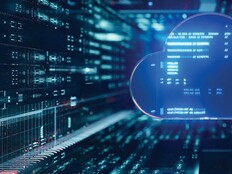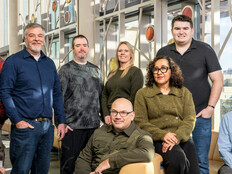Classroom Labs Are the Next to Go Virtual
With the help of cloud-based platforms and virtual desktop infrastructure (VDI), more and more university laboratories are going digital.
In our Spring 2016 issue of EdTech: Focus on Higher Education, we covered how the University of South Carolina Upstate rolled out a VDI environment with VMware Horizon and App Volumes that allowed students remote access to computer labs and software that was previously only available in person and at specific times.
The virtualization of the college computer lab has been a widespread development over the past few years. By going digital, schools are creating 24/7 access for students and are reducing costs of maintaining physical labs.
Desktop virtualization company NComputing reported that the University of Tennessee at Chattanooga has reduced computing costs by 60 percent since virtualizing. Two states and 350 miles to the north, the University of Cincinnati’s College of Education, Criminal Justice & Human Services maintains a virtual lab through VMware View for students and faculty.
“This technology allows the creation of hundreds of cloud-based lab computers that can be accessed from practically anywhere on just about any device,” according to UC's Office of Innovative Technology & Learning Design.
So, if computer labs can go digital, why not the old-school science and engineering labs? That seems like the logical next step to many.
Virtual Laboratories Expand Access to ‘Hands-On’ Experience
In University Business this past June, Kelly Walsh, CIO at The College of Westchester in New York, wrote about transitioning classroom labs to the cloud.
“Developing digital lab equipment and specimens can require significant investments in new technologies,” Walsh writes. “Fortunately, moving some types of lab work to a virtual space is easier and less costly.”
California State University, Los Angeles has been leading this charge. Since spring 2013, the university’s biology department has been using a virtual fruit fly lab to study genetics, the Los Angeles Times reports.
“When we look at the rapid growth in the number of students versus science lab facilities, it’s just not enough,” Gerry Hanley, Cal State’s assistant vice chancellor for academic technology services, told the Times.
At The College of Westchester, Walsh writes that students in the computer networking specialist program use virtual laboratory software to practice configuring and connecting network components. The University of Maryland University College also has a virtual lab for tech students where they work through simulated cyberattacks.
Through this technology, lab access doesn’t just have to be limited to the university itself.
Through a partnership with the Agriculture Department, New Mexico State University and South Dakota State University have also created several publically accessible food science laboratories. SDSU’s department of dairy science reported that over one million user sessions of the lab by undergraduates and high school students have been recorded.
“Academically, students struggle in difficult science courses required for agriculture and food science majors,” the report says. “This supplemental instruction can assist students to better associate practical applications of this knowledge outside the classroom with potential agriculture and food science careers.”









